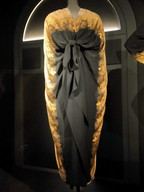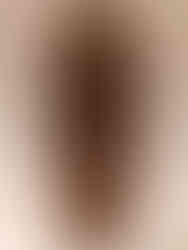CHANEL AT THE V AND A
- Jessica Light

- Jan 15, 2024
- 3 min read
The enigma that is Coco Chanel [1883-1971]. A feminist icon that freed women from contstictive clothing by introducing simple sportswear shapes, jersey and tweed to create a modern wardrobe for women or complicit with the shady accusations of Nazi collaboration during the Second War? These questions often arrise during any conversation about Chanel. What has never been in dispute, and is very much backed up by the extensive exhibition at the Victoria and Albert Museum, London, are her extraordinary design skills and eye that endured for over sixty years. So much of today's fashion's iconography and language can be attributed to her and what she created.The Black Dress, The Chanel Suit, No 5, the first designer scent that became widely accessible, other signature perfumes, costume jewellery [gilt, pearls and paste], quilted handbags and two-tone shoes,the Camilia flower as an emblem and the simple, stylish branding, especially the doubles C's, that is instantly recognisable as Chanel...the list goes on.

The ubiquitous quilted handbag.
Her couture house produced some of the most exquisite evening gowns. Embroidered, beaded, and feathered, they started out light as a feather when she utilised fabrics and shapes normally associated with undergarments, like chiffon, in the 1920's and 30's to the jacquard metalic cocktail lames and brocades of the 50's and onwards. One of the stand out pieces was a monochrome jacket where the join in between the black and white fabrics had been embroidered over to create a seamlessly ombre effect. A truly stunning item of clothing both visually and in its execution in construction and workmanship.
Evening wear from the 30's to the 70's.
Daywear is also synonymous with Chanel, especially the tweed skirt suits with their boxy braided jackets and, mostly knee length, skirts. She had become enamoured with tweed in the 1920's when she started to wear her lover's, The Duke of Westminster, jackets, and even had a factory in Scotland that wove her exclusive tweed fabrics. Jersey was another fabric that Chanel used for daywear. Not normally associated with women's clothing, apart from sports and under wear, this fabric gave drape, comfort and ease to her radical shapeless designs.
The Chanel Suit.
There are many highlights in this exhibition. To be able to see the craftsmenship and skill in the construction is, if you can muscle through the crowds, this being a blockbuster exhibition means it's very busy, a joy, especially, if like me, you are obsessed with process. The wide range of textiles on view is also a big treat. Tweeds, linens, silks of all persuasions, fringing, brocades and prints all share a staring role.
Examples of Chanel textiles.
There is a room full of the brand's distinctive costume jewellery, another dedicated to her perfume, Chanel No.5. This was one of my favourite stages of the exhibition from a personal view point. I have been a No.5 girl since I was 21, which is more moons than I care to remember.
It wasn't just the scent that seduced me but the clean, classic packaging that surrounds it that I was drawn to.
Examples of Chanel No.5 packaging.
A feast of gilt, pearls and paste costume jewellery.
Chanel reinvented herself and her look many times over her life and this exhibtion is a delicious journey though her increadable catalog. A testament to, not only a very talented creative,but someone with drive, instinct and tenacity.
Gabrielle Chanel. Fashion Manifesto.
Ends 25th February 2014.






































Comments